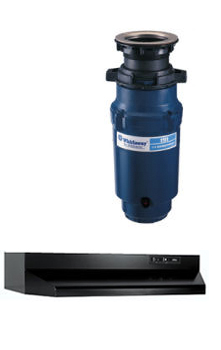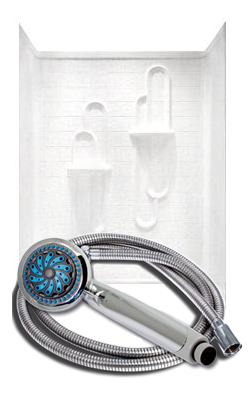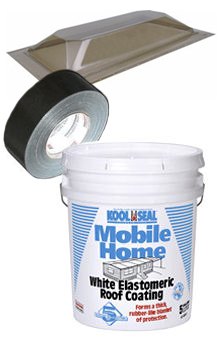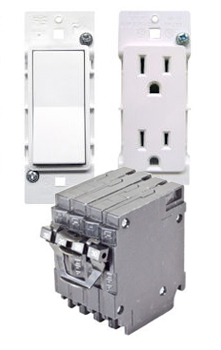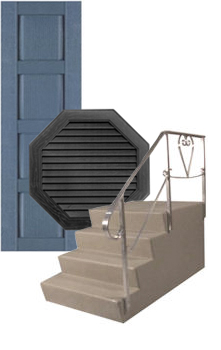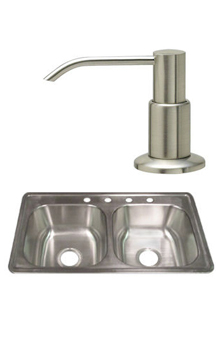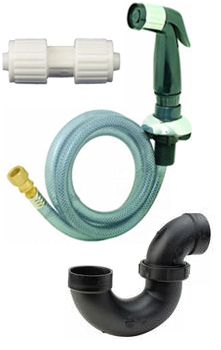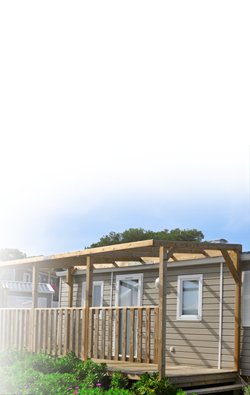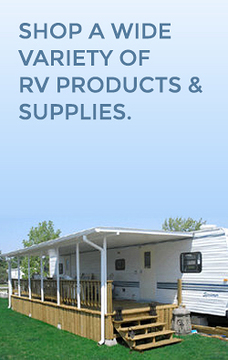 For any RV owner, ensuring that their mobile home remains in top-notch condition is imperative. What’s a top priority in RV upkeep? Securing the RV roof and its seams. Like all things, sealants have a shelf life. Over the years, they can dry up, suffer damage from UV rays, and cracks can form due to the constant movement from traveling. If left unchecked, it will allow water in, causing mold, mildew, and structural damage. But with the right sealant and technique, your RV can remain leak-free, prolonging the life of your RV.
For any RV owner, ensuring that their mobile home remains in top-notch condition is imperative. What’s a top priority in RV upkeep? Securing the RV roof and its seams. Like all things, sealants have a shelf life. Over the years, they can dry up, suffer damage from UV rays, and cracks can form due to the constant movement from traveling. If left unchecked, it will allow water in, causing mold, mildew, and structural damage. But with the right sealant and technique, your RV can remain leak-free, prolonging the life of your RV.
Here’s everything you need to know about RV sealing.
What are Sealants?
Sealants are a substance used to close gaps, cracks, and seams to prevent unwanted water, dust, and air from entering your RV. Think of it as a protective barrier, keeping unwanted and desired elements out. Think of sealant as an invisible shield, guarding your RV from unwanted wear and tear, similar to caulking.
RV Roof Caulk vs. Sealant
While the terms are often used interchangeably, there’s a distinct difference. RV roof caulk is made from a mixture of latex and acrylic materials, which makes it more rigid and prone to shrinking when cured. Generally, it is used for filling gaps or seams on RV parts, especially around windows and trims. Sealants, however, are used to create a watertight seal on broader surfaces, like the roof. Think of caulk as a filler and sealant as a protector. Both play an essential role in keeping your RV safe and dry.
Different Types Of RV Sealants
Before you head to the store to buy a sealant, you need to understand the different types available on the market – because there are a lot of them! Choosing the right sealant for your RV project is essential. You shouldn’t just grab the first option you see. Instead, you should research what product is best for the job.
Some of the common sealants available for your RV are:
- Self-Leveling RV Roof Sealant: As the name suggests, this sealant spreads out after application, creating a smooth surface. It’s ideal for horizontal RV surfaces.
- Non-Sag RV Sealant: Unlike self-leveling variants, non-sag sealants retain their form post-application. They’re perfect for vertical applications.
- RV Sealant Tape: This sealant is in tape form and is especially handy for quick fixes. It’s easy to apply – simply peel off the backing and stick it to the area.
- RV Roof Patch Kit: This comprehensive kit is designed for more extensive roof repairs. However, an RV sealant tape could patch pretty much anything a patch kit could at a fraction of the cost.
There is no one-size-fits-all solution for sealant, so seek expert advice on the best product for your specific RV and climate.
Considerations for Choosing an RV Roof Sealant
When deciding on an RV sealant, consider the following:
- Level of Damage: More extensive damage might require a patch kit or tape, while sealant can address minor leaks.
- The Roof Material: Whether it’s metal, rubber, or fiberglass, the material of your roof will determine the type of sealant required. Different sealants work best with certain materials. Always check the label.
- Elasticity & Tear Resistance: Movement and temperature changes can cause expansion and contraction. An elastic sealant can handle these shifts without cracking.
- Resistance to UV: Exposure to sunlight can degrade some sealants over time. Opt for a UV-resistant product for prolonged durability.
 Peel & Seal
Peel & Seal
If dealing with more extensive damage, it’s imperative to patch them before applying your sealant. Peel & Seal is an excellent choice for repairing RV roofs.
Peel & Seal is a self-adhering waterproofing material with a reflective aluminum surface. This sheet is constructed of multiple layers of laminations, including special aluminum foil, high-density polymer films, and a thick layer of rubberized asphalt for waterproofing.
The polymer films strengthen the sheet and serve as the primary protection against leaks. While the rubberized asphalt ensures a tight seal at overlaps and around most punctures, providing a durable waterproof shield.
How to Apply Sealant To Your RV
- Choose Your Timing Wisely: Sealant should be applied during dry conditions, preferably when no rain is expected for at least 24 hours.
- Remove Old Cracked Sealant: Use the Dap® ProCaulk™ or a heat gun and plastic pick to remove old cracked sealant. However, if the sealant only has minor cracks, you can move to step 3.
- Clean the Area: Any oils, dirt, or debris can affect the sealant’s adhesion. Clean the area thoroughly with acetone before application, and let dry.
- Cover Well: Use a caulking gun or applicator and ensure a consistent bead of sealant covers the area thoroughly. Run a spatula or putty knife over the sealant if air bubbles form. Then let the sealant cure for 24 hours. If multiple layers are needed, wait until the first one is dried before reapplying.
How Often To Apply Sealant To Your RV
So you have your sealant in hand and applied it to your RV, but what now? When do you need to reapply the sealant to your RV again?
Silicone can take some time to apply, so you won’t want or need to do it every single month. While there’s no hard and fast rule, a good practice is to inspect your RV sealant at least once a year when you apply your RV roof coating. With time and exposure, sealants can degrade depending on the quality of the sealant used. Regular inspections can help you catch potential leaks before they become major issues.
When you’re inspecting your RV, check all the vertical and horizontal seams in places like:
- Around the windows
- Seams of your Slide-outs
- Corner joints
- Anywhere there is an RV appliance or internal compartment.
Seal the Deal with Mobile Home Parts Store
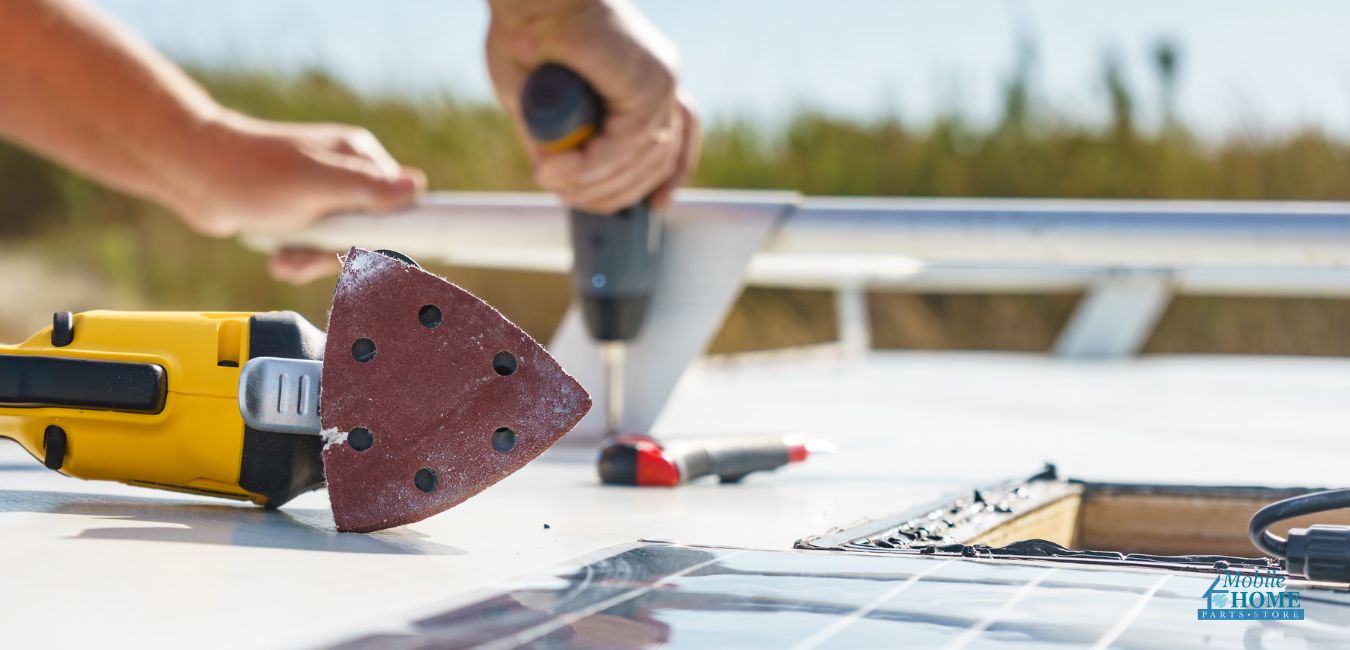 A well-maintained RV ensures safe and enjoyable adventures on the road. You can protect your RV from unwanted leaks and damages with the right sealant and proper application. Remember, your RV is not just a vehicle; it’s your home on wheels. Make sure it’s well-protected.
A well-maintained RV ensures safe and enjoyable adventures on the road. You can protect your RV from unwanted leaks and damages with the right sealant and proper application. Remember, your RV is not just a vehicle; it’s your home on wheels. Make sure it’s well-protected.
If you’re looking to shop for RV sealant, consider visiting Mobile Home Parts Store. With a wide variety of RV parts and accessories, including different sealants like Peel & Seal, you’ll find everything you need to keep your RV in tip-top shape. Remember, proper maintenance with quality products will lead to many happy journeys on the road. Happy sealing!
Tags: Peel & Seal, peel and seal, RV, rv accessories, rv parts, rv parts store, rv repair, RV supplies


